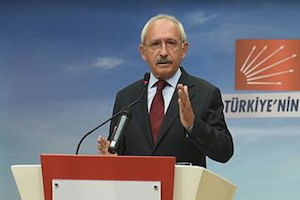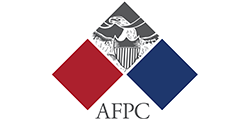
BACKGROUND: While Turkey’s authoritarian drift under the rule of the Justice and Development Party (AKP) has been closely followed by international observers, far less notice has been paid to the rise of inequality in Turkish society. It is true that the gap between rich and poor has always been wide in Turkey, but like its conservative predecessors, the AKP rose to power promising “justice” and “development” for the benefit of the lower classes. Its actual record is nonetheless unsurprising, given the historical record of conservatism in Turkey.
The AKP era has seen the richest 1 percent of the population increase its share of the national wealth by 43 percent, putting it in possession of 54 percent of the country’s wealth.
Turkey’s conservative ruling parties have by tradition donned the mantle of lower class advocates – and have been rewarded with a near-unbroken string of electoral gains since 1950 – only to privilege the interests of the economic elite in power.
The main Turkish trade union confederation, DİSK, estimates that 16 million, out of a population of 84 million, are poor, with an additional 18 million in the risk zone of poverty. The Turkish Statistical Institute puts the number of poor at 11 million. A new survey by Kadir Has University in Istanbul shows that the rise of inequality is having a significant impact on political perceptions, possibly presaging a new ideological landscape.
Since the mid-1990s, Turkish politics have been defined by the secularist-religious conservative dichotomy, together with the Turkish-Kurdish issue and nationalism. However, the polarization between secularists and religious conservatives is now giving way to a new polarization between rich and poor, the Kadir Has survey indicates. Of those 50.8 percent, who think that Turkey is polarized, 43.5 percent single out the secularist-religious divide as the main axis of societal polarization. Nonetheless, this represents a decline from 52 percent in 2017 and in 2018.
In 2019, 20.5 percent singled out the rich-poor divide as the main axis of societal polarization, which is a sharp increase from 13.7 percent in 2018 and 9.5 percent in 2017. Meanwhile, a vast majority, 84.5 percent finds the tax system, which favors businesses, unfair.
There is also a related resurgence of the left-right division: while in 2017, only 15 percent thought that the left-right dichotomy was the most important source of societal polarization, 24.4 percent did so in 2019. Self-identified social democrats have more than doubled, to 13.8 percent, since 2018, when their share was a mere 6.3 percent.
The percentages of those who identify as religious, conservative and nationalist are more or less stable: the religious are down to 28 percent from 31 percent in 2018; the conservatives surge to 18.3 percent from 13.5 percent in 2018, although that represents a small decline from 20.7 percent in 2015; the share of nationalists – close to 20 percent, down from 21 percent in 2018, but up from 16.3 percent in 2015 – is also relatively stable. However, the share of the secularist-nationalists, the Kemalists, is in rapid and dramatic decline.
In 2015, 25.4 percent identified themselves as Kemalists. They were down to 16.9 percent in 2018. In 2019, their share stood at 10 percent, making them the smallest ideological constituency, overtaken by the social democrats at 13.8 percent.
One interpretation is that the decline of the Kemalists and the rise of the social democrats are related, since Kemalism and social democracy share sociological base, the urban middle class progressives. These have historically privileged fighting either for social justice – as they did in the 1960s and 1970s in alliance with the working class – or for secularism, which has been their all-consuming priority since the mid-1990s. Secularism still matters, but in a less obsessive way, while social justice has reappeared as a progressive priority. But there is a glaring disconnection between the doubling of the share of social democrats, the perception of a return of the left-right divide and of the rich-poor polarization on the one hand, and on the other the center-right course of the officially social democratic Republican People’s Party, Turkey’s main opposition party.
The leader of the CHP, Kemal Kılıçdaroğlu, is out of step with the public perception when he argues that the left-right divide has become irrelevant. But that’s only because class conflict, the discontent of the lower class, has been contained with religion and cheap credit. While the state has promoted religious conservatism as an antidote to potential leftism, the banks have provided the lower class with cheap credits. By now, the latter has dried up, while the AKP era has to a certain extent compromised religion as a useful tool for ensuring lower class acquiescence to neoliberal economics that disproportionately benefit the economic elite.
IMPLICATIONS: The question now is therefore how the quietude of the lower class is going to be bought off when inequalities in income and wealth continue to grow. Ensuring social stability is arguably going to require redistributive policies. However, the CHP leader has said that it was a mistake by the left in the past to focus on income redistribution.
Kılıçdaroğlu, who has been the leader of the CHP for the last ten years, is a pragmatist who has made a point of reaching out to religious conservatives; he has gone out of his way to convince them that the CHP is not an anti-Islamic party, seeking to dispel the “unfortunate perception that the CHP looks down on and belittles the people.” By moving the CHP to the right on social issues, Kılıçdaroğlu may have indeed contributed to the growing perception in Turkish society that the secularist-religious conservative polarization has become less poignant. But to reduce the new polarization between rich and poor, the CHP will need to move to the left on economic issues. That would not be the first time that the CHP makes a virtue of necessity.
The CHP was founded in 1923 by Mustafa Kemal, Turkey’s first president. Initially a coalition of bureaucrats and big land owners, the party was simultaneously a force for cultural change, capitalist development and conservatism. In the 1950s, it embraced the liberal aspirations of a new, urban middle class. But it was in the 1960s that the CHP made its most dramatic change, when it redefined itself as a center-left party. It did so out of necessity, in order to avoid losing ground to the socialist left that was ascendant. However, under the leadership of the progressive populist Bülent Ecevit in the 1970s the CHP ended up challenging the established economic and political order.
Like Kılıçdaroğlu is doing today, Ecevit reached out to the religious conservatives, but unlike Kılıçdaroğlu, he did so with a radical message of social justice. In 1976, the CHP declared itself to be democratic leftist, and carried the general election in 1977 with 42 percent of the votes, the party’s best election score ever. Yet the social democratic “revolution” was not to be. The military and the right colluded to undermine Ecevit. But Ecevit’s radicalism also met with strong opposition from within his own party. After 1980, when the military had banned the CHP, together with the other parties, Ecevit said that the CHP, as far he was concerned, had completed its mission. “The CHP was anyway always a bourgeois party. It never succeeded in becoming a social democratic party,” he said. Ecevit was embittered, but the history of the CHP since it was resurrected in 1992 has not contradicted the judgment of its most successful leader in electoral terms. The party has since the 1990s catered for the urban, secularist middle class, ignoring the working class.
CONCLUSIONS: In the 1970s, when the CHP aligned with the working class, the latter was strong and organized. That is no longer the case. Neither are there any radical movements to the left of the CHP that would compel it, like in the 1960s, to move to the left to avoid being overrun. The democratic socialist Peoples’ Democratic Party (HDP) does not exert any such pull on the CHP since its appeal is restricted to the Kurdish voters.
Yet as developments in other countries have shown in recent years, growing inequalities tend to destabilize the body politic and invite destructive political forces. In Turkey itself, class divisions have benefited authoritarian, conservative populists. To ensure that this is not repeated ought to be compelling reason enough for the founding party of the Turkish republic to make a new turn to the center-left.
CHP leader Kemal Kılıçdaroğlu has committed his party to the task of rescuing Turkish democracy, in the name of which he has aligned his party with conservative parties that are in opposition to the AKP. But it should also be recognized that the struggle for democracy cannot dispense with policies for social justice.
AUTHOR’S BIO:
Halil Karaveli is Senior Fellow with the Central Asia-Caucasus Institute & Silk Road Studies Program Joint Center and Editor of the Turkey Analyst. He is the author of Why Turkey is Authoritarian: From Atatürk to Erdogan (Pluto Press)
Image Source: Public Domain via Wikimedia Commons 1.30.2020



